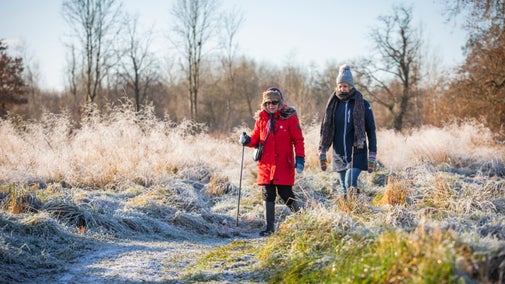Elizabethan House Museum's Great Yarmouth heritage trail
Norfolk
Discover the rich maritime heritage of Great Yarmouth. Starting at the Elizabethan House Museum, visit some of the town's oldest buildings and find evidence of its intriguing history.
Near to
Elizabethan House MuseumStart point
Elizabethan House Museum, grid ref: TG523073Trail information
Step into the past
In 1261 King Henry III granted Yarmouth the right to build a town wall and large sections of the walls, including some of the towers, still survive today. It also has the imposing monument commemorating Norfolk's hero, Admiral Lord Nelson.
More near here
Horsey Windpump and beach walk
Follow the Horsey Broadland landscape and wander across low–lying grazing marshes, sand dunes and a sandy beach with grey seals.

Dunwich Heath wartime trail
SuffolkA trail taking you on an in-depth dive into the wartime history of Dunwich Heath, stopping at locations around the site that still show evidence of the military activity.

Get in touch
Our partners

We’ve partnered with Cotswold Outdoor to help everyone make the most of their time outdoors in the places we care for.
You might also be interested in
Discover Elizabethan House Museum
Discover what there is to do at the Elizabethan House Museum in Great Yarmouth, Norfolk. The building reflects the families who lived here from Tudor to Victorian times.

Walking
Explore some of the finest landscapes in our care on coastal paths, accessible trails, woodland walks and everything in between. Find the best places to walk near you.

Walking in Norfolk
Discover the best walks around Norfolk, from a stroll around the estate at Blickling to a bracing trek on the Norfolk Coast Path.

Cotswold Outdoor: our exclusive walking partner
Learn about the National Trust’s ongoing partnership with Cotswold Outdoor. Find out how they help us care for precious places and the exclusive discount available for National Trust supporters.

Staying safe at National Trust places
The special places in National Trust care sometimes come with a few risks for visitors, be it coastline or countryside. Find out how to keep safe throughout your visits.

Follow the Countryside Code
Help to look after National Trust places by observing a few simple guidelines during your visit and following the Countryside Code.

